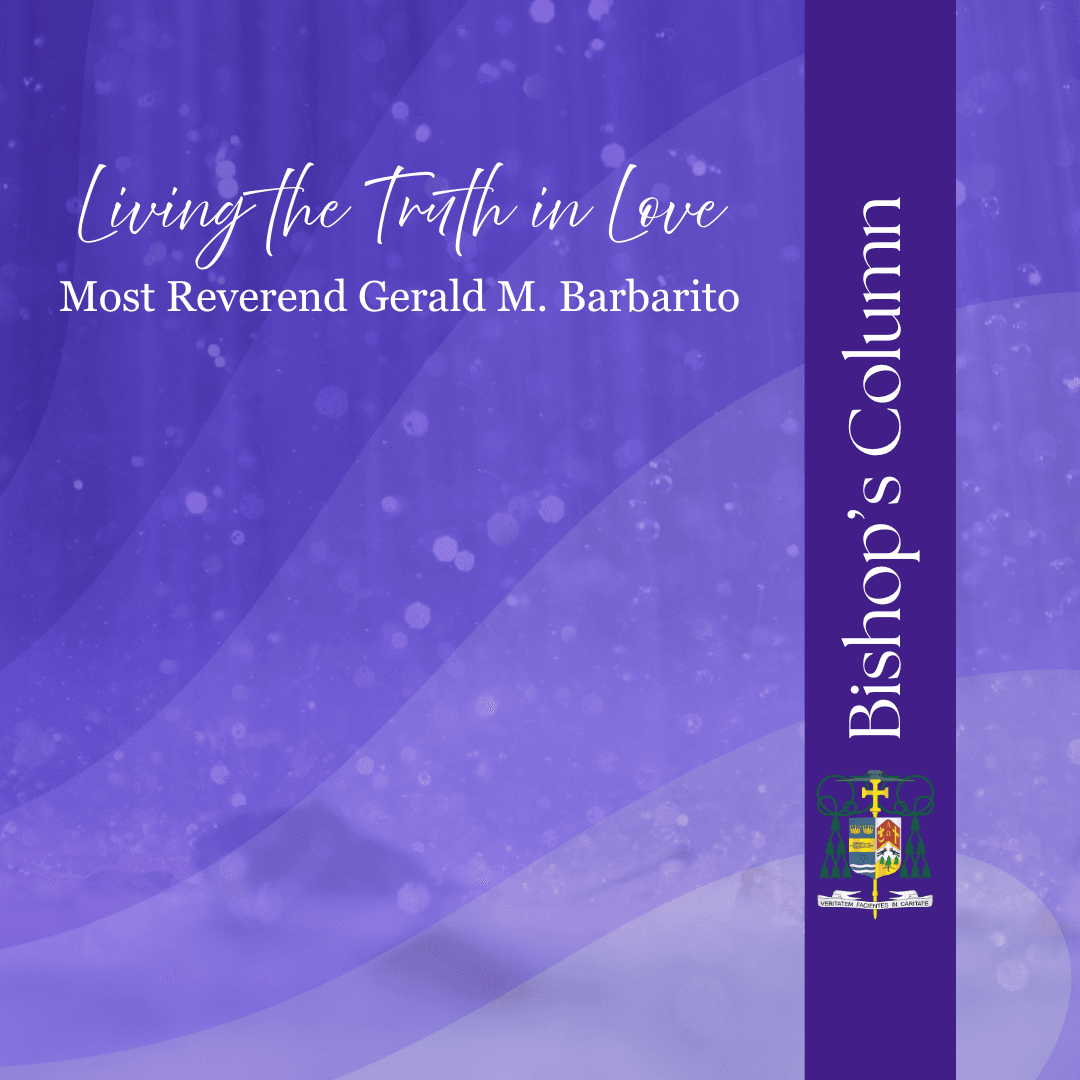
Mary — the First and the Last
The month of May has come to its conclusion. May is dedicated in a special way to our Mother, Mary, who leads us to her Son so that we might know His joy in our lives. The Diocese of Palm Beach is especially blessed to have Mary as Queen of the Apostles for our patroness. On the first Sunday of this month we celebrated our annual Marian Festival at the Rosary Way of Emmanuel Parish. It was a beautiful celebration in which so many different cultures brought images of our Blessed Mother particular to them. The rosary was also prayed in various languages prevalent within our Diocese. We consecrated ourselves and our Diocese to the Immaculate Heart of Mary. We finished our celebration in the presence of Mary’s Son in the Eucharist with His blessing in Benediction. We had to move to the church because of heavy rain from which we were timely protected. As we conclude this month, dedicated to Mary, we celebrate on its final day, May 31, a significant feast in honor of Mary — that of the Visitation.
We know from the Gospel of St. Luke that Mary, having received the message from the angel Gabriel that she is to be the Mother of our Lord, immediately goes to visit her cousin, Elizabeth, who is six months pregnant with John the Baptist. Mary’s visit fills her, as well as the child in her womb, with joy. Elizabeth cries out the words we say each day in the Hail Mary, “Blessed are you among women, and blessed is the fruit of your womb” (Lk 1:42). Elizabeth praises Mary for being the one who trusted God as she also cries out, “Blessed are you who believed that what was spoken to you by the Lord would be fulfilled” (Lk 1:45).
Elizabeth’s praise of Mary as the one who believed what was spoken by the Lord is much in keeping with the Lord’s praise of Mary in the Gospels. Jesus praises His Mother not simply on the basis of her being His Mother but on the basis of her trusting in the will of God. There is an incident in the Gospel of St. Luke where Mary and relatives come looking for Him but cannot get to Him because of the crowd. When Jesus is told of this, instead of making room for them by welcoming them first, Jesus simply says, “My mother and my brothers are those who hear the word of God and act on it” (Lk 8:21). Jesus points to the prominent place of Mary as the one who listens and carries out the word of God. It is that which makes her the first and perfect disciple. In the same Gospel, we are also told that a woman praises Mary as the Mother of the Lord. She cries out, “Blessed is the womb that carried you and the breast that nursed you” (Lk 11:27). But Jesus praises His Mother by saying, “Blessed are those who hear the word of God and observe it” (Lk 11:28). Similar to Elizabeth, Jesus places Mary’s greatness in her willingness to live the word of God.
During her visit to Elizabeth, Mary proclaims the beautiful prayer of the Magnificat. She praises God for His goodness and especially for His looking upon her and choosing her in her lowliness. She proclaims words which our Lord would often affirm in His teaching — that it is the poor and humble who are considered great in the eyes of God, and the great and mighty who are cast down. Mary proclaims this prayer with great humility and joy, which marks her blessedness and the example of being the perfect disciple of the Lord. Mary’s Magnificat is a beautiful prayer as it expresses well what the meaning of mercy is all about. Mary proclaims in the Magnificat that “His mercy ... is from generation to generation” (Lk 1:50). God, in His goodness, bestows His love upon us freely, not because we deserve it, but because He wants us to be part of His life. He freely grants His forgiveness, and He freely gives His gifts and graces so lavishly. It is up to us, realizing that we are not worthy of these gifts, to receive them freely, knowing that our reception of them gives joy to God. Mary understood this in a perfect manner in her life.
The Visitation of Our Lady is significant because, throughout the Gospels, whenever Mary is mentioned it is always while she is doing some visitation. She is a woman who goes out in order to bring the joy of her Son to others. The one time we find Our Lady at home is when the angel Gabriel visits her to announce that she is to be the Mother of God. From that point onward, we always find her on visitations. After her visit to Elizabeth, Mary is next encountered as she and Joseph leave their home to go to Bethlehem, where Jesus is born. From there, they flee to Egypt. In the infancy narratives, we find Mary visiting the Temple to present the Lord Jesus after His birth. Later, we find her visiting Jerusalem for the Feast of the Passover. We find Mary visiting a wedding feast, where she encourages the Lord to perform His first miracle. We find her on visits, as previously mentioned in the Gospel of St. Luke, going to see Jesus as He presents His teaching.
The final visits of Mary in the Gospels are most significant. We see her at the foot of the cross in the Gospel of St. John, where Jesus entrusts her to us as our Mother. This is very significant as, before the death of the Lord, He entrusts Mary to His beloved disciple, who represents the Church. She now becomes our Mother, and St. John tells us that, “from that hour the disciple took her into his home” (Jn 19:27). The new home of Mary is the Church, of which she is the Mother. It is from here that she will continue to make visits to us. The final mention of Mary is in the Acts of the Apostles at the great celebration of Pentecost, when the Holy Spirit comes upon the apostles and Mary. Mary is visiting the upper room with the apostles when this great event takes place, and it is from here that the apostles go forth from her to make their visits to all of God’s family to proclaim the Gospel of the Lord.
It was inspiring to experience the deep devotion to our Blessed Mother of both Pope Francis and Pope Leo XIV as they made visitations to her. Pope Francis often spoke of his deep devotion to Mary, which was evident in his frequent visits to the icon of Our Lady, Protector of the Roman People, at the Basilica of St. Mary Major in Rome. In fact, he made his final visit to her as he decided to be buried across from this icon in the basilica rather than at the Basilica of St. Peter. One of the first visits of Pope Leo XIV, after his election, was to the icon of Our Lady of Good Counsel at the Augustinian church under the same name in Genazzano, right outside of Rome. He expressed his deep devotion to Mary and encouraged us all in the same vein. These popes remind us, as did the ones who preceded them, of the prominent role of Mary in our lives, truly as the first and last among all Christians.
As we conclude the month of May and celebrate her visitation to Elizabeth, we realize that Mary, truly as our Mother, visits us in a special way to bring her Son to us in our lives. She does so in a manner which comforts and assures us of what the meaning of life is all about and in a manner in which we truly know her as our Mother. She also does so in a manner which reminds us that we too must go forth to visit others and bring the loving message of her Son to them. We greet her as did Elizabeth, “Blessed are you among women, and blessed is the fruit of your womb,” as well as “Blessed are you who believed that what was spoken to you by the Lord would be fulfilled.”
Most Reverend Gerald M. Barbarito

